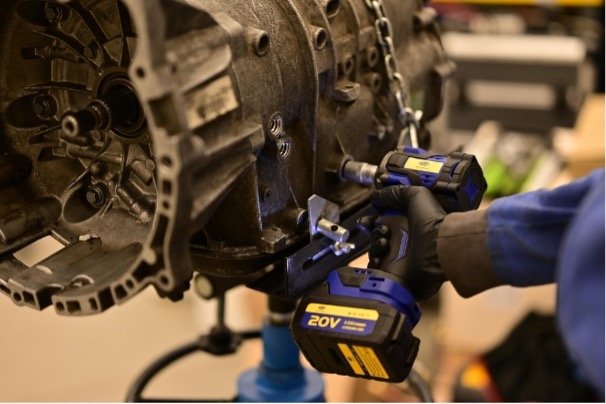As the seasons change, air conditioning system service should be a priority for workshop and motorist alike


Why is AC servicing important?
Although the AC system keeps the vehicle’s occupants comfortable whatever the weather, it is particularly important that it’s running effectively in hotter conditions. This article provides technicians with tips and advice as to how to keep AC systems running efficiently season after season.
Although the AC system may not be hugely complex, a fault in just one of the components can cause a significant drop in performance, leading to uncomfortable conditions in the cabin, as well as other, less obvious side-effects, such as a decrease in fuel efficiency.
AC overview
AC operation relies on taking heat out of the passenger compartment by absorbing the heat into a refrigerant that transports the heat away from the occupants, so that it can be released outside the vehicle.
The main components of the AC system are the compressor, condenser, expansion valve and evaporator, as well as the refrigerant used to absorb the heat, which in most existing systems, is known as R134a. However, for environmental reasons, vehicles manufactured since January 2017, must use R1234yf refrigerant.
The detail
The compressor is a key AC component, as it creates the flow required to circulate the oil/refrigerant mixture through the system. The compressor generates high pressure at its discharge port and low pressure at the suction port and sucks in the gaseous refrigerant from the evaporator, where this superheated refrigerant has absorbed heat from the passenger compartment. The refrigerant is then compressed, which adds additional heat, and then this high temperature, high pressure gas is forced from the compressor discharge port into the condenser.
The DENSO sub-cool type condenser operates using the same principles as a domestic radiator, transferring heat to the outside air. Inside the condenser, the high pressure, gaseous refrigerant changes state to a high pressure, warm liquid. Next, the cooled liquid refrigerant flows to the expansion valve where the high pressure of the refrigerant forces it through a small orifice or hole, which has the effect of injecting the refrigerant as a mist that is then able to expand.
The expansion allows the pressure to reduce, which also reduces the temperature, and causes the refrigerant to change state again, from a warm high pressure liquid, into a cooler, low pressure mist that is more easily able to absorb heat when it passes through the evaporator.
The low pressure mist refrigerant now flows into the last major component of the AC system, the evaporator, which is located within the heating, ventilation and AC (HVAC) unit, behind the dashboard. The evaporator consists of a tank, tubing and fins that are exposed to the air in the passenger compartment, where heat from the air is able to transfer to the fins and then be absorbed into the refrigerant mist.
At the exact moment that the refrigerant absorbs this heat, it vaporises and changes back to a gas and this superheated gaseous refrigerant then flows from the evaporator, back to the compressor, where the whole process starts again. This process is called the refrigerant cycle.

There is also an interior ‘cabin’ filter that processes the air as it enters the vehicle’s HVAC unit, removing any dirt particles and pollutants before they reach the cabin. So, just as the oil filter is periodically replaced as the engine oil is changed during a vehicle’s routine maintenance, the cabin filter, as well as the quality and quantity of the oil/refrigerant mix should be checked on a regular basis.
What to look out for
The two most regular concerns that owners tend to raise that should point workshops to issues with the AC systems are the fact that the air coming into the cabin doesn’t get as cool enough and there is an unpleasant odour in the vehicle, which is often accompanied by misty windows that do not clear effectively.
On hearing either of these issues, workshops must first look at the performance of the AC system and the condition of the cabin filter, to confirm the customer’s complaint.
As mentioned earlier, the refrigerant is a key element within the AC system, as its constant recirculation removes heat from the air. So, to cool the incoming air effectively, it therefore needs to be at the right level and clean enough to run through the system’s components efficiently. When it comes to the odour and misting issues, it’s the cabin filter that must be considered because, over time, their performance naturally drops as they become contaminated by the pollutants they filter out.
Regular maintenance is key
Workshops should recommend that their customers have their vehicle’s AC system serviced preferably every year, but certainly at a minimum of every two years, which should include the replacement of the cabin filter. This will not only prevent the temperature, performance, odour and misting issues from arising, but allow technicians to detect potential faults within the system before they become major problems, so saving their customers precious time and, over the lifetime of the vehicle, money.
More practical AC service advice is available here through DENSO’s ‘Seven essential steps of AC Service’.













